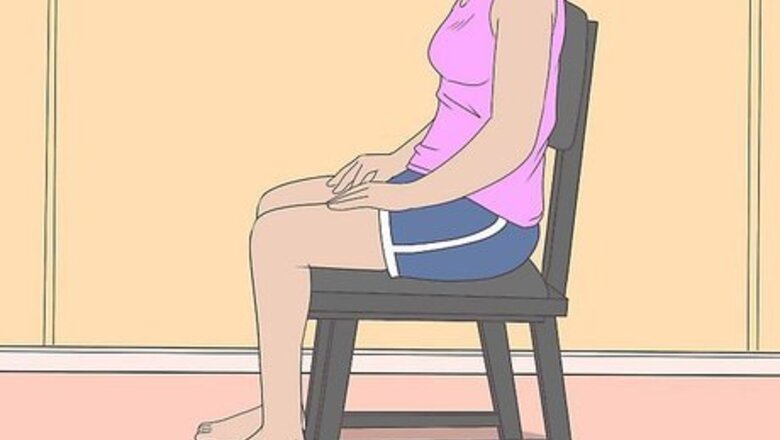
views
Rotating Your Hips in a Chair
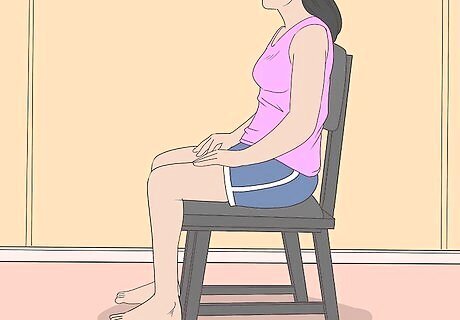
Start in a comfortable chair where you can cross your legs at the knees. This hip rotator stretch involves you bringing one leg over the other. This means that the chair you're sitting in needs to give you enough room to cross your legs without anything getting in the way. Chair without arms or embellishments on the sides work best. Sturdy folding chairs and dining chairs are often a great choice for this exercise.
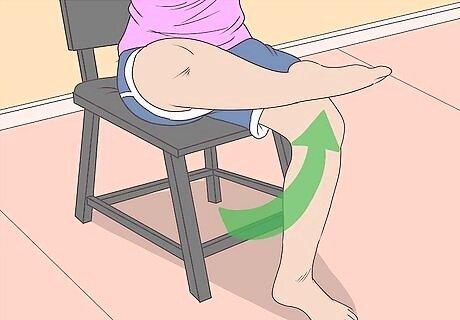
Bring one leg over the other. Gently guide the leg of the hip you want to stretch over the other leg. The leg you’re stretching should be bent at the knee so that your ankle is laying on the thigh of your other leg. The foot of the second leg should be flat on the floor. For example, if you want to pop your left hip, you would bring your left leg up across your right leg.
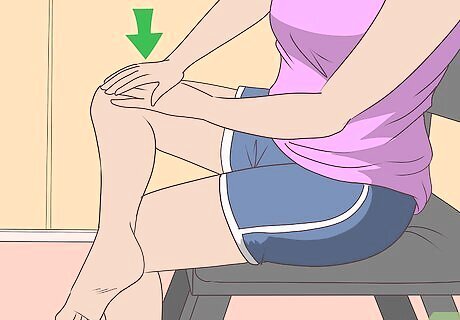
Place your hands on the thigh of your crossed leg. Then, press down until you feel just a bit of resistance. This process shouldn’t hurt—if you feel any pain, stop immediately and bring your legs to a neutral position.

Bend forward at the hips as far as you can. With your hands still applying pressure, bend your torso forward over your crossed leg as much as you can while still keeping your back straight. Avoid hunching or curving your lower back as you stretch.

Hold this position for no more than 30 seconds. Inhale and exhale slowly as you hold it. Try to stay bent forward for 30 seconds. If 30 seconds feels like too much, hold the position for as long as you are able to before slowly lifting your torso up and sliding your crossed leg down to the floor.

Repeat this stretch on the other side to open up both hips. It’s not necessary to repeat this stretch if you don’t feel like doing so. However, performing this stretch for both hips helps keep them open and avoid the strain and tension that leads to the urge to crack your hips.
Popping Your Hips While Standing
Stand up straight in an area where you have room to move. Start this exercise by standing in a tall but relaxed position. Your spine should be straight, but you shouldn’t be tensing any of your muscles. Your feet should be shoulder-width apart. Make sure you have plenty of space to move and turn for this exercise.

Bend your arms at the elbow while holding your hands in front of you. Bring your fingers into a fist for added stability. Your elbows should be tucked into your sides and your forearms should be extended out directly in front of your elbows.
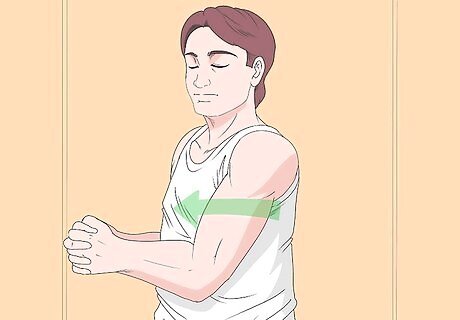
Turn your upper body to the left as far as possible. Slowly twist at your waist so that your upper body turns as far to the left as you can push it without any pain. During your twist, your feet should stay planted and your lower body should not move. Hold this twist for 1 deep inhale and exhale.
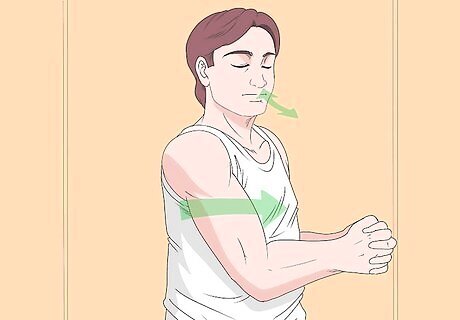
Twist all the way to the right. After you exhale, slowly bring your body back to center before repeating the twist on the right side of your body. Just as with the left twist, your lower body should not move as you twist. Hold this position for 1 deep breath before returning to center.
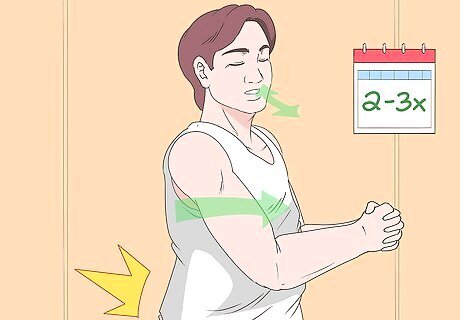
Repeat this exercise 2-3 times. If you do not experience a crack during your first set of twists, repeat the stretch a couple more times. Try twisting a little further to each side as you repeat the stretch. If you don’t feel a pop within 2-3 twists, stop and try a different method.
Stretching Your Hips on the Floor

Open up your hips with the pigeon pose. The pigeon pose loosens tight or sore hips. To start, come down on a mat or soft surface on all fours. Bend your left knee and bring it down to sit slightly behind your left wrist. Bring your left foot forward so that it travels across the width of your hips and finds a place directly behind your right wrist. Make sure that your right leg is straight back behind your right hip, sitting in a neutral pose on the mat. If your hip doesn’t pop once you get into the basic position, fold forward at the waist to bring your hips over your left knee. Lower your forehead to the floor if you can. If you can’t reach the floor, use a pillow or blanket as a bolster. Use a bolster under your left hip to keep you supported if you find an unsupported stretch is painful or difficult. Hold this pose until your hip pops, or for 5 deep breaths (whichever comes first). Then, repeat it on the other leg to ensure your hips are evenly stretched and open.

Use a kneeling hip flexor stretch to activate your hips. For this stretch, start with one knee on the ground with your calf squared directly behind and your toes tucked on the floor. Your other leg should be bent at the knee in a 90 degree angle with your foot planted flat on the ground in front of your hips. Stretch up through the spine and place your hands on your knees to maintain balance. To complete the stretch: Exhale and lean forward until you feel a deep stretch in your hips. Tighten your abs and depress and retract your shoulders to keep your back tall and straight as you lean in. Squeeze and contract your glutes to add additional stretching. Hold this pose for 30-45 seconds before coming up and resting for a few seconds. Repeat this stretch 2-5 times on each leg. Complete all repetitions on one leg before switching to the other.

Try a seated hip mobilization stretch. This basic stretch slowly puts pressure on your hip until it cracks. Start seated on a comfortable, flat surface such as an exercise mat. If you don’t have a mat, a towel or even a carpeted area can work. Then: Bend the leg of the hip you want to crack at the knee. Your leg should be going back at a 90-degree angle with your foot situated behind your bottom. Bend your other leg so that your foot tucks into the knee of your first leg, forming a triangle-like shape. Bring your hands up toward the center of your chest and rotate your torso to the left as much as possible. Hold this position for 30 seconds to 1 minute before returning your torso to a neutral center. Then, rotate your torso as far as you can to the right and hold for another 30 seconds to 1 minute. Repeat this process no more than 5 times. If your hip does not pop during these twists, move on to a different stretch.
Getting Professional Help
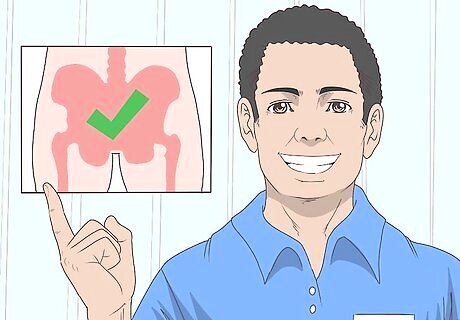
Meet with a chiropractor if you can’t pop your hip. If your efforts alone can’t get your hip to pop, set up an adjustment with a chiropractor in your area. They will be able to manipulate your body to help you get the relief you need. Your chiropractor may also be able to provide you with some stretches and at-home exercises you can do to relieve tension in your hips between adjustments. Needing to crack your hips is usually due to tight tendons in the IT band. The IT band is a tendon that slides over the side of your hip.

Work with a physical therapist if you have chronic hip tension. If you feel the need to crack your hips over and over again, you may benefit from working with a physical therapist to keep your hips loose. Your therapist will work with you in-office to improve your hip mobility, then provide you with stretches and exercises you can do at home to continue the process. When your hip snaps frequently, it's indicative that you need to stretch that tendon a lot more than you already have been. This is especially common in dancers, yoga instructors, and others who use a wide range of movement for their jobs. You may even be able to ask your coach or trainer for a recommendation or referral to a therapist that specializes in your industry. Runners also frequently experience pain on the side of their hip and talk about it popping, which is called an external snapping hip.

See your doctor if your hip tension turns into hip pain. If your hip tension keeps coming back or progresses into outright pain, see your doctor. You may have a tear in the muscle or joints, or even a bone fracture. Let your doctor know about any symptoms you experience. They may choose to do some diagnostic testing such as X-rays in the office, or they might refer you to a specialist.


















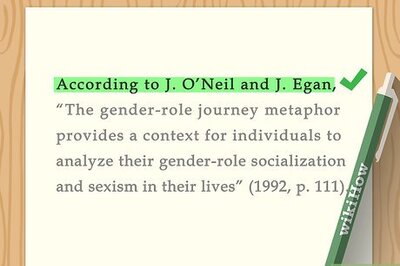

Comments
0 comment